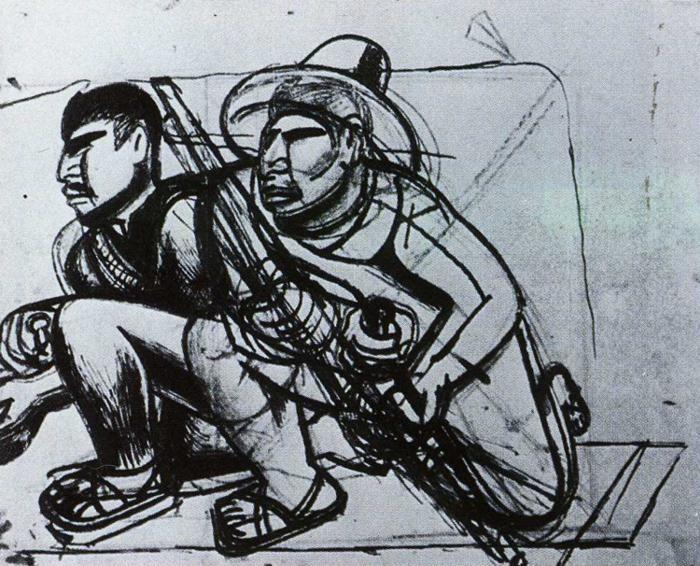Welcome, my blog is about all the weapons, battles, and the tactics of the american revolution.
-by Jake Greve
Weapons, battles,and tactics of the American Revolution
Wednesday, November 24, 2010
About Guerrilla Warfare
Guerrilla Warfare is when "irregulars" which include but not limited to, civilians, and/or militia members using military tactics, such as, cunning ambushes, sabotage, or raids using the element of surprise, and extraordinary mobility to attack a larger or less mobile groups and fall back almost IMMEDIATELY. So basically, they'd attack their target and fall back to their base or camp using stealth and power in a perfect combination. It sounds like a weak form of fighting, but when preformed by trained professionals, can be extremely deadly to the opposing force.
here is a picture of some guerrilla fighters
here is a picture of some guerrilla fighters
Battle of Bunker Hill
The Battle of Bunker Hill took place on June 17, 1775, mostly on Breeds Hill, which was used by the Americans and British. Although the battle took place on and around Breeds Hill, the battle was named after the Bunker hill, next to it. William Prescott stealthily occupied Breeds Hill and established a light parameter around the Charlestown Peninsula. When the Americans took the bunker on top of Bunker Hill, the British decided to take it back. The Americans were low on ammo, but the British were very well prepared for battle. After the battle, the British won, but had, over 800 wounded men and 286 dead men. The British may have won the battle but not the war.
Here is a map of Bunker Hill
Here is a map of Bunker Hill
The Musket
The musket was a long, muzzle-loaded rifle. Which means the ammo was not put into a magazine like now-a-day guns, it was put straight into the muzzle. It took about 15 seconds to load a musket, first you would have to clean out the barrel of the gun, second, pour gunpowder down the muzzle, third, pack it down with cotton or other flammable fabric, fourth, load the musket ball, fifth, pour more gun powder down the barrel, sixth, pack it down, seventh, fire, and repeat, sounds like a pain in the neck doesn't it? Muskets were also a very bad weapon of choice. It was EXTREMELY inaccurate and VERY short ranged. Now, you may be wondering why anybody would be using this, well first off, it was pretty much the only gun they had back then, second, after firing the shot would make a large cloud of smoke that would make it hard for the enemy to aim. Lastly, if you always charged with bayonets, you'd lose a lot of men to enemy fire, muskets are inaccurate but they have a good chance of a hit when you were a foot away. Now you know all about muskets in the revolutionary war.
Below, is a picture of a old-time musket
Below, is a picture of a old-time musket
Battle of Trenton
The Battle of Trenton was a battle between the Americans, Hessians, and the British. The Battle of Trenton took place in Trenton, New Jersey on the Delaware River on December, 25th, 1776. 2,400 Americans with only 18 guns. 1,400 Hessians with 6 light guns. guns back then are not what they are today, they were cannons, not guns like todays guns, almost every troop had a musket but these were short ranged and not very accurate at all, another reason bayonets were useful. The British were the most prepared for the war, they had 30 cannons, and 4,000 troops, all of them were armed with muskets and wore red coats and leather helmets. The battle was a victory for Washington and his American troops.
The Bayonet
The bayonet was one of the most dangerous and deadly weapon of the american revolution. The bayonet wasn't sharp so it would tear more flesh than actually cut through, thus making it more deadly. It was also a great choice for bad weather, muskets would not work very well in the rain because the rain would get inside the gun and wet the gunpowder inside the barrel and it wouldn't fire at all, and bayonets didn't need gun powder so they often worked very well. Even when rusty, the bayonet worked EVEN BETTER! because when there was rust there was a higher chance that they could get an infection. Bayonets were also great for roasting meat over a fire and tent stakes. As you can see bayonets were EXTREMELY useful in the american revolution.

Here's a picture of a bayonet used in the American revolution.

Here's a picture of a bayonet used in the American revolution.
Subscribe to:
Posts (Atom)


